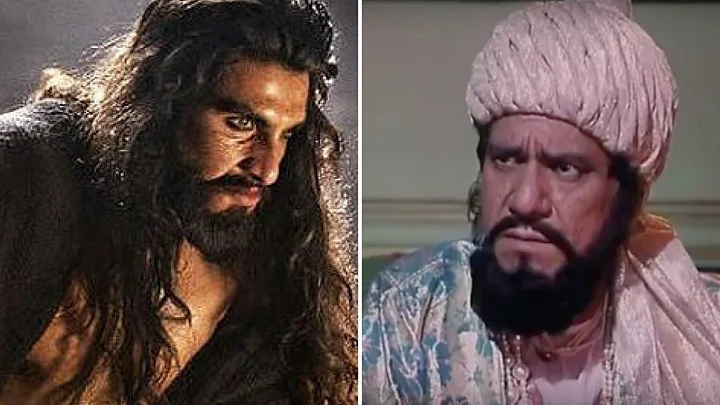Long before Ranveer Singh played the Delhi Sultanate leader Alauddin Khilji in Sanjay Leela Bhansali’s Padmaavat as the mercurial monster, late veteran actor Om Puri essayed his role in Shyam Benegal’s Bharat Ek Khoj, the 53-episode Indian historical drama based on the book The Discovery of India (1946) by Jawaharlal Nehru. Both the works of art are based on Malik Muhammad Jayasi’s sixteenth-century epic poem Padmavat.
While we should give credit to Bhansali for the depiction of a strong Rani Padmini unlike the docile queen in Bharat Ek Khoj, the fault lines are evident in the depiction of the tyrant Khliji. Puri’s Khilji and Singh’s Khilji are like chalk and cheese.
The Khilji in Padmaavat comes across as a vile, snarling, meat-eating savage sans table manners driven by lust - a personification of depravity. His kohl rimmed eyes and towering, brawny physique, seems to be modelled on Khal Drogo from The Game of Thrones. His world, including his wardrobe is enveloped in a dark palette reflecting his primeval universe and his murky intentions. The Khilji in Bharat Ek Khoj dressed in vibrant royal garb looks like he bathes every day unlike Ranveer’s Khilji, a leader whose face is speckled with grime throughout the film. If Ranveer wears furry coats, Puri wears pearls. Puri may have nurtured the desire to covet Rani Padmini after hearing about her legendary beauty but his greed for the Chittorgarh jewels supersedes his desire for the queen. Unlike Ranveer’s Khilji, he is not a repulsive portrait of menace and lechery but a ruthless and authoritarian aristocrat.
A Machiavellian character, Ranveer’s Khilji steers clear of integrity, while Puri’s Khilji does stop and think before he indulges in the unscrupulous act of incarcerating and betraying Ratan Singh. He is polite and cultivated in his mannerisms.
The bisexual insinuations in Khilji’s track from Padmaavat count as firsts in mainstream Bollywood but they are missing in Benegals’ Bharat Ek Khoj. The latter does not even depict jauhar.
(We Indians have much to talk about these days. But what would you tell India if you had the chance? Pick up the phone and write or record your Letter To India. Don’t be silent, tell her how you feel. Mail us your letter at lettertoindia@thequint.com. We’ll make sure India gets your message.)
(At The Quint, we question everything. Play an active role in shaping our journalism by becoming a member today.)
